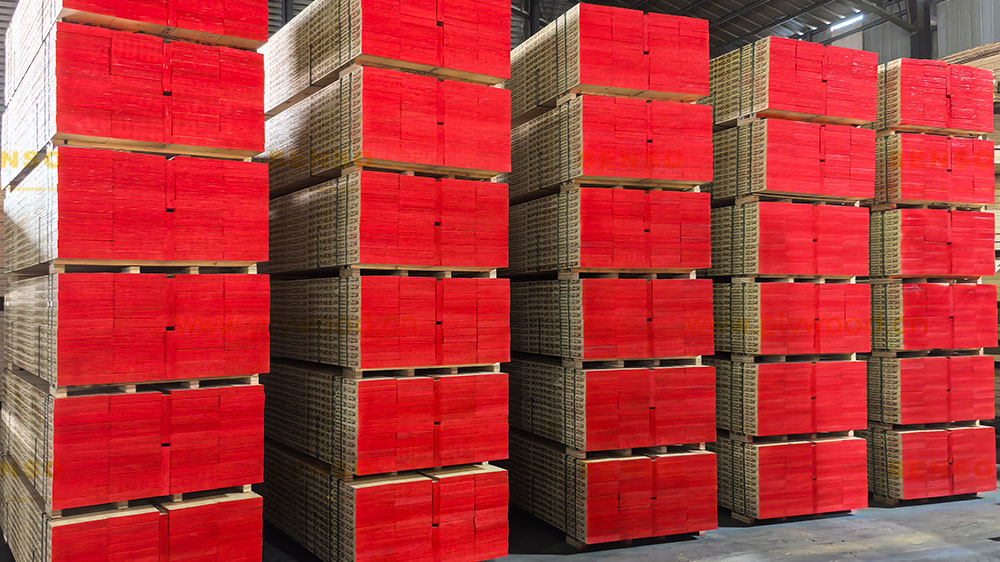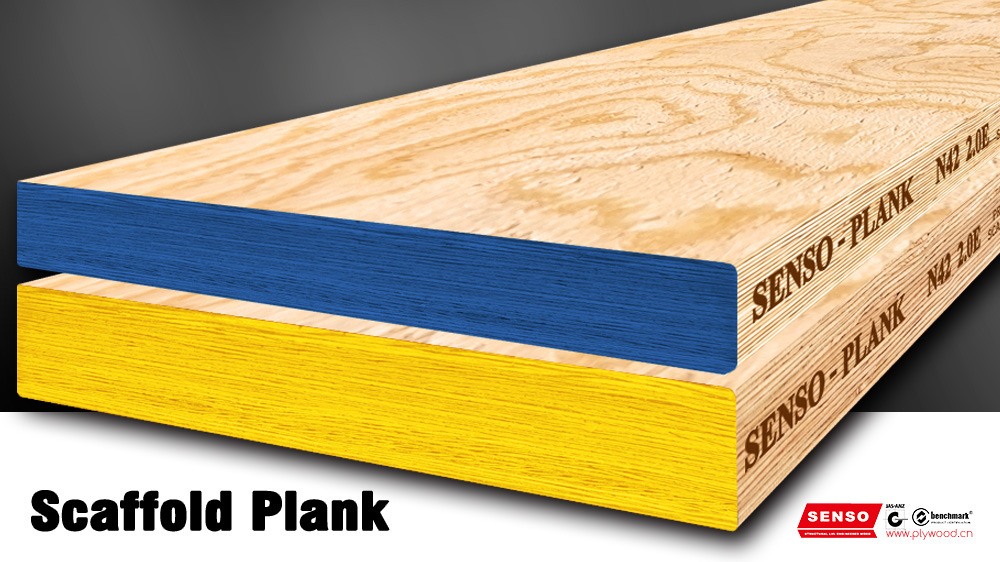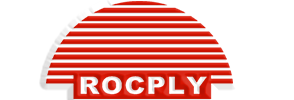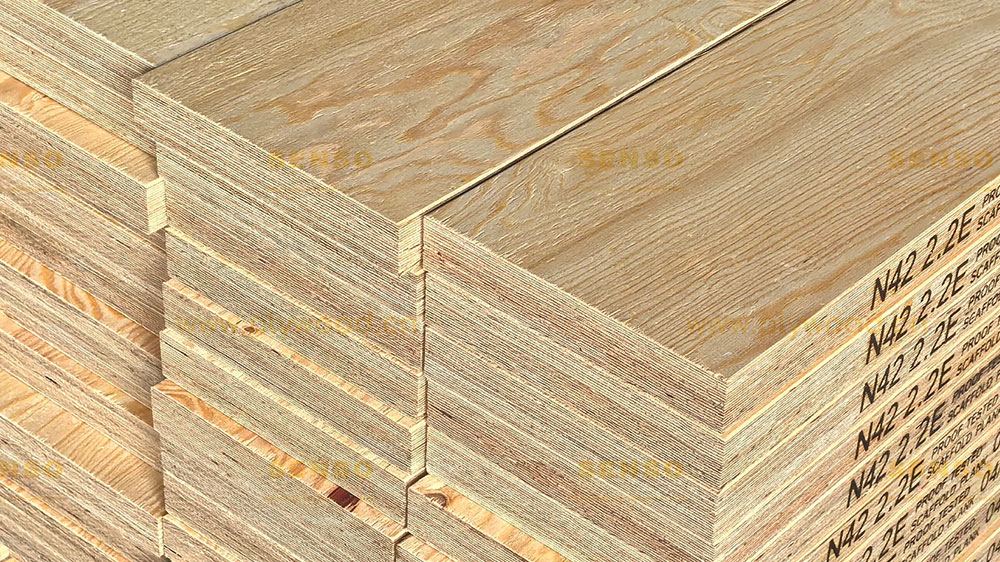What Is a Scaffold Plank?
A scaffold plank is a core component in temporary working platforms used during construction, repair, or maintenance work. It provides the stable surface workers stand on when using scaffolding systems. Scaffold planks come in various materials—wood, metal, composite—and are designed to support workers, tools, and materials at height. The performance of a scaffold plank depends on its material, size, and construction quality. Common terms such as timber planks, walkboards, and scaffolding planks all refer to these load-bearing boards. Selecting the right scaffolding plank is critical to maintaining job site safety, improving efficiency, and ensuring compliance with local construction standards.
Scaffold Plank vs. Scaffolding Plank: Is There a Difference?
Though often used interchangeably, scaffold plank and scaffolding plank can have subtle differences depending on the region or supplier. Scaffold plank is a general term. Scaffolding plank sometimes refers to planks pre-designed for specific scaffold frames. Both offer similar support functions, but the design and compatibility may vary slightly.
Choose scaffold planks when looking for general-purpose boards. Select scaffolding planks when working with modular scaffold systems that require precision-fit components.
Scaffold Plank Material Comparison
Timber Planks: Trusted and Traditional
Timber planks are the classic scaffolding planks choice. Used for decades, they offer a natural grip and reliable strength.
Advantages: Cost-effective, easy to cut or replace, good traction.
Best For: Traditional construction, dry environments.
Watch Out: Timber planks can warp or split without proper maintenance.
Wooden Scaffold Plank: Similar, Yet Slightly Different
Wooden scaffold planks usually refer to treated or engineered wood products. These differ slightly from raw timber planks in composition.
Advantages: Pre-treated for moisture resistance, lightweight.
Best For: General-purpose job sites.
Watch Out: Not ideal in environments with repeated wet-dry cycles.
Metal Walkboards: Durable and Uniform
Metal walkboards are gaining popularity due to their consistent performance and long-term durability.
Advantages: Fireproof, rot-resistant, high load capacity.
Best For: High-rise jobs, industrial work zones.
Watch Out: Heavier and costlier than timber options.
Composite Scaffold Boards: The Modern Hybrid
Composite scaffold planks are made from fiberglass, aluminum, or plastic blends. They combine strength and weather resistance.
Advantages: Non-conductive, waterproof, strong.
Best For: Projects near electrical installations, wet environments.
Watch Out: More expensive and less common globally.
Choosing the Right Scaffold Plank Size
Standard Scaffold Plank Sizes
Scaffold plank sizing must align with your scaffold frame and project demands. Common lengths range from 6 to 13 feet, and widths vary between 9 to 12 inches. These standard scaffolding plank sizes allow easy compatibility with most scaffolding systems.
Length: Typically 6ft, 8ft, 10ft, or 13ft
Width: Commonly 9in or 10in
Thickness: Varies by region but often 38mm or 50mm
Correct size ensures safety and prevents platform instability. Too short, and gaps appear. Too long, and planks may sag under weight. Standard scaffold boards and scaffolding plank types are sized for general use, making them ideal for most construction sites.
Custom Scaffold Plank Sizes
Some projects demand non-standard sizes due to unusual platform spacing or site-specific constraints. Many scaffold plank suppliers offer cutting or manufacturing services to create custom sizes.
Custom sizes provide flexibility but must meet load-bearing regulations. Always confirm load capacity ratings for non-standard scaffold planks. Custom timber planks are especially popular in overseas construction markets.
Load Capacity and Safety Ratings for Scaffold Plank
Understanding Load Classifications
Scaffold plank load capacity is one of the most searched concerns globally. Workers, tools, and materials can quickly exceed unsafe limits without proper planning. Scaffold planks are categorized by load class:
Light Duty: Up to 25 lbs/ft² — best for painters or light trades.
Medium Duty: Up to 50 lbs/ft² — ideal for general construction.
Heavy Duty: 75+ lbs/ft² — suitable for bricklaying, demolition, or large equipment.
Always match scaffold plank selection to project load requirements. Timber scaffold boards used on heavy-duty scaffolds should be thick, pressure-tested, and reinforced.
Scaffold Plank Testing and Certification
Trustworthy scaffold planks are tested and certified. Look for the following standards when choosing planks:
OSHA (US): Required for construction use in the United States.
EN 12811 (EU): European standard for scaffolding boards and walkways.
AS/NZS 1577 (Australia/New Zealand): Covers timber scaffold planks and grading.
Scaffold planks with these certifications undergo rigorous inspection for load-bearing strength, moisture resistance, and dimensional stability. Certified scaffolding planks provide long-term safety and assurance on-site.
Environmental Considerations for Scaffold Plank Selection
Weather-Resistant Scaffold Planks
Outdoor construction sites expose scaffold planks to moisture, temperature shifts, and UV rays. Choosing the right plank material helps minimize damage:
Timber Planks: Must be kiln-dried and pressure-treated.
Metal Walkboards: Rust-resistant coatings extend longevity.
Composite Planks: Naturally waterproof and best in wet climates.
Timber planks without proper sealing degrade quickly. Store all scaffold planks in dry, covered locations when not in use to prevent warping and mold growth.
Reusability and Lifespan
Durability impacts cost. Wooden scaffold planks may require frequent replacement if mishandled, while metal and composite walkboards last for years. Scaffold plank choice should consider both upfront costs and total lifecycle value.
Common Applications of Scaffold Planks
Residential Construction
In home building and renovations, scaffolding plank flexibility and ease of handling are crucial. Timber planks dominate in this space due to cost-effectiveness and lighter weight.
Industrial and Infrastructure
High-rise and infrastructure jobs demand maximum durability. Metal walkboards and heavy duty scaffold planks are preferred, especially in steel-framed scaffolding systems.
Temporary Staging and Events
Scaffold planks are also used in non-construction setups such as event staging. Light-duty timber plank or wooden scaffold planks are often enough for temporary, low-traffic use.
How to Buy the Best Scaffold Plank for Your Project
Key Buying Considerations
When sourcing scaffold planks for wholesale or project use, assess these aspects:
Material Type: Match to your load and environment needs.
Certifications: Look for international compliance standards.
Size Options: Ensure sizes fit your scaffold frame layout.
Supplier Reliability: Work with established manufacturers or distributors.
Durability Features: Treated surfaces, reinforced cores, anti-slip textures.
Tips for Wholesalers and Construction Buyers
Purchase in bulk to reduce per-unit costs.
Request technical data sheets to verify compliance.
Evaluate sample pieces before large-scale orders.
Ensure local regulations are met — scaffold board laws differ per country.
Ask for anti-slip or fire-retardant treatments where required.
Comparing Scaffold Plank Options
Scaffold planks are more than just wooden boards or metal panels. They are essential safety elements on every job site. Choosing the right scaffolding plank—whether traditional timber planks, modern composite walkboards, or steel scaffolding planks—depends on your specific work environment, project scope, and safety requirements.
Timber Planks: Affordable, practical, and widely used.
Wooden Scaffold Plank: Treated and engineered for added performance.
Metal Walkboards: Built for strength, uniformity, and longevity.
Composite Planks: Ideal for specialty use and extreme conditions.
When in doubt, opt for certified scaffold board that have been tested for load, moisture, and durability. The right scaffold plank choice not only protects workers but also ensures smooth operations and long-term project success.
Post time: Jun-02-2025


